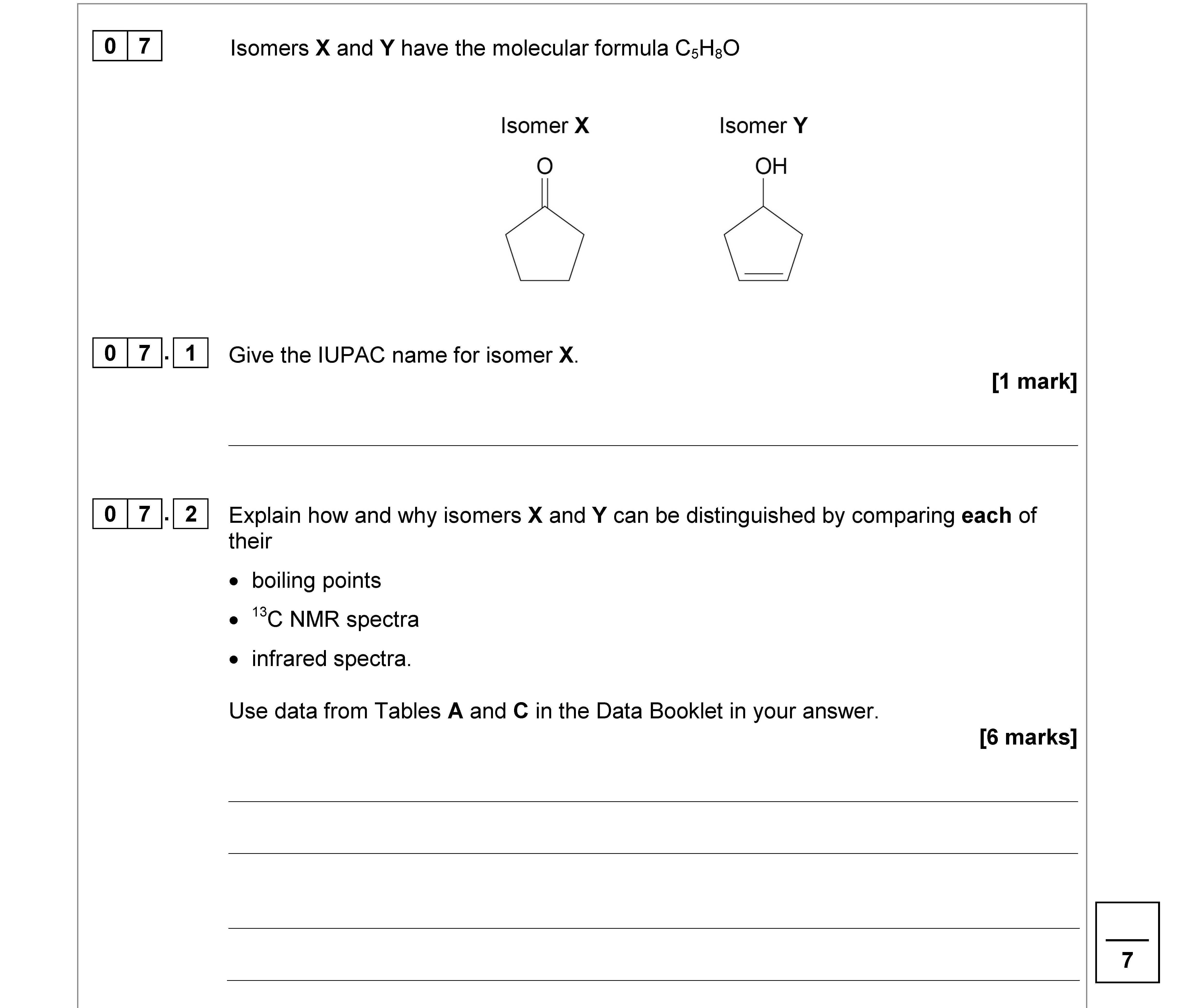Photo AI
Isomers X and Y have the molecular formula C3H8O Isomer X Isomer Y 07.1 Give the IUPAC name for isomer X - AQA - A-Level Chemistry - Question 7 - 2019 - Paper 2
Question 7

Isomers X and Y have the molecular formula C3H8O Isomer X Isomer Y 07.1 Give the IUPAC name for isomer X. 07.2 Explain how and why isomers X and Y can be disting... show full transcript
Worked Solution & Example Answer:Isomers X and Y have the molecular formula C3H8O Isomer X Isomer Y 07.1 Give the IUPAC name for isomer X - AQA - A-Level Chemistry - Question 7 - 2019 - Paper 2
Step 1
Step 2
Explain how and why isomers X and Y can be distinguished by comparing each of their boiling points.
Answer
Boiling points can differ between isomers due to differences in molecular structure. Isomer X (cyclopentanone) has a higher boiling point compared to isomer Y, which is an alcohol, due to stronger hydrogen bonding in the alcohol. This results in a higher energy requirement for isomer Y to change from liquid to gas.
Step 3
Explain how and why isomers X and Y can be distinguished by comparing each of their 13C NMR spectra.
Answer
In the 13C NMR spectra, isomer X will show a different number and pattern of peaks compared to isomer Y. Isomer X typically has a peak around 200-220 ppm due to the carbonyl group, while isomer Y will have more peaks due to its hydroxyl (-OH) group, occurring between 50-100 ppm. This difference in chemical shift allows for differentiation.
Step 4
Explain how and why isomers X and Y can be distinguished by comparing each of their infrared spectra.
Answer
In the infrared spectra, isomer X will exhibit a carbonyl (C=O) stretching vibration around 1700 cm⁻¹, while isomer Y will show a broad O-H stretch due to hydrogen bonding, typically around 3200-3500 cm⁻¹. These distinct peaks help in identifying and distinguishing the two isomers.
